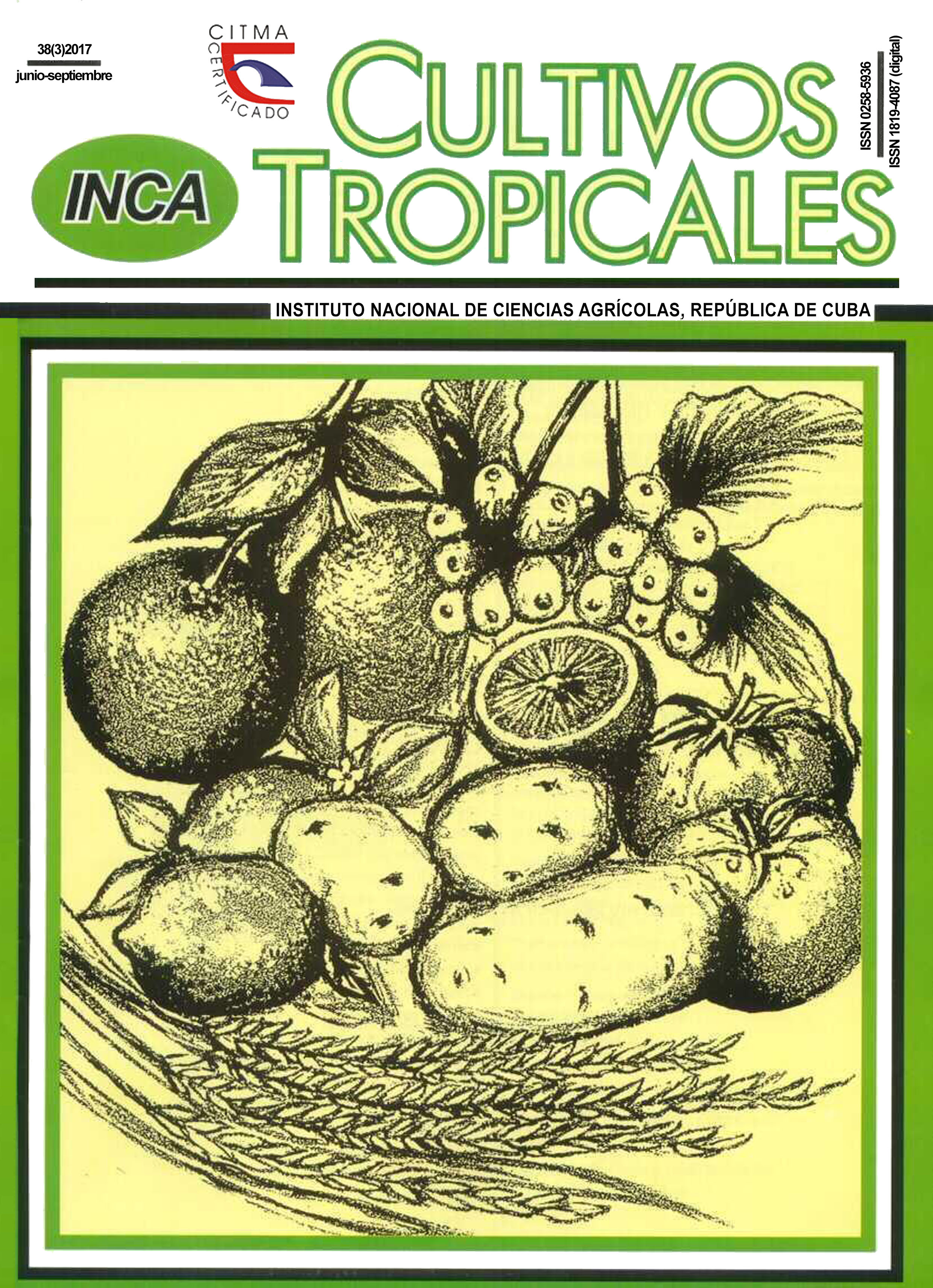Influence of three sowing dates on the biological productivity of sorghum cultivation (Sorghum bicolor L. Moench)
Main Article Content
Abstract
In order to evaluate the influence of three planting dates on growth and supply demand relationship in the cultivation of sorghum, the work was developed at the National Institute of Agricultural Sciences (INCA). Three planting dates were studied: November 2008, June 2009 and July 2009, using a density of 15 kg ha-1. plants destructive samplings were made every 15 days after emergence to harvest, determining the dry mass of organs, adjusting the data to a polynomial exponential function of the second degree, “x” was the days after the emergency “y” variable in question. from the regression equations the net assimilation rate (NAR) and leaf area ratio (RAF) were calculated. The relationship between the power source and power demand was also calculated and found to greater efficiency in the use of radiation leads to higher maximum in (NAR) and the potential between the supply and demand organs and therefore a greater accumulation of biomass in next time to physiological maturity, standing out in this case the dates of June and July 2009 which expressed more efficient in relation to growth rates assessed behavior, resulting in these higher yields.
Article Details
Those authors who have publications with this journal accept the following terms of the License Attribution-NonCommercial 4.0 International (CC BY-NC 4.0):
You are free to:
- Share — copy and redistribute the material in any medium or format
- Adapt — remix, transform, and build upon the material
The licensor cannot revoke these freedoms as long as you follow the license terms.
Under the following terms:
- Attribution — You must give appropriate credit, provide a link to the license, and indicate if changes were made. You may do so in any reasonable manner, but not in any way that suggests the licensor endorses you or your use.
- NonCommercial — You may not use the material for commercial purposes.
- No additional restrictions — You may not apply legal terms or technological measures that legally restrict others from doing anything the license permits.
The journal is not responsible for the opinions and concepts expressed in the works, they are the sole responsibility of the authors. The Editor, with the assistance of the Editorial Committee, reserves the right to suggest or request advisable or necessary modifications. They are accepted to publish original scientific papers, research results of interest that have not been published or sent to another journal for the same purpose.
The mention of trademarks of equipment, instruments or specific materials is for identification purposes, and there is no promotional commitment in relation to them, neither by the authors nor by the publisher.
